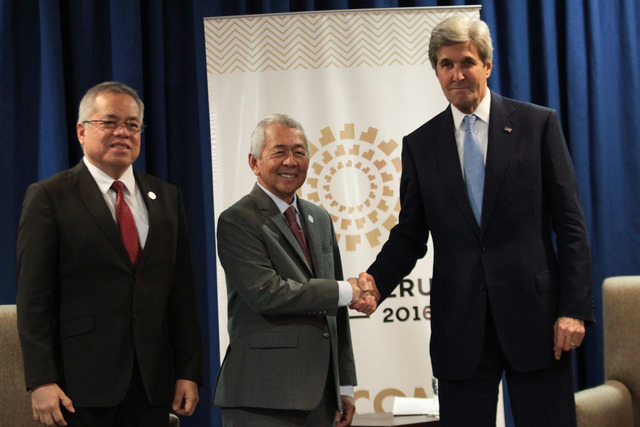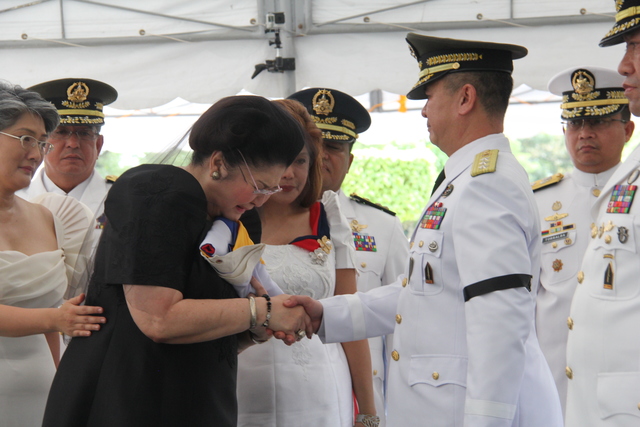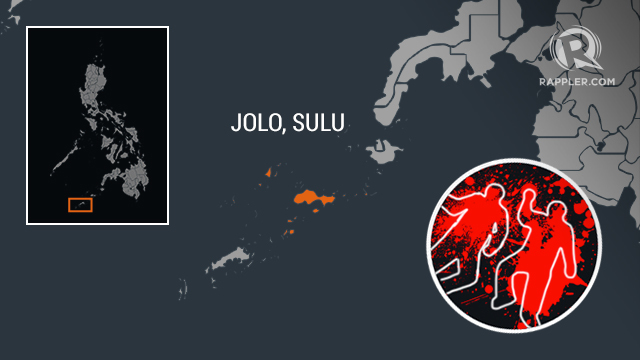From MindaNews (Nov 17): 1974
Malisbong Massacre memorialized in “Forbidden Memory” film
It took 40 years for the Philippine government to officially acknowledge the massacre of at least 1,500 Moro residents of the coastal barangay of Malisbong in Palimbang, Sultan Kudarat in September1974 — one of the worst human rights violations under the Marcos dictatorship but not known to majority of the Filipinos.
The massacre has been memorialized in Moro filmmaker Gutiterrez “Teng” Mangansakan’s documentary feature, “Forbidden Memory,” which will have its world premiere at the Gateway Cinema in Quezon City on November 18. The film’s poster reads: “The Greatest Marcos Horror Story Never Told.”

“Forbidden Memory” is one of three documentary features out of 10 entries to the Cineme One Originals Festival that started on November 14 and will end on November 22.
The film’s synopsis says Forbidden Memory “summons remembrances and memories of the fateful days in September 1974 when about 1,000 men from Malisbong and neighboring villages in Palimbang, Sultan Kudarat province, were killed while 3,000 women and children were forcibly taken to naval boats stationed nearby where they encountered unspeakable horror. The genocide and atrocities were perpetrated under the dark years of the Martial Law regime of Ferdinand Marcos.”
In his Director’s Journal Entry posted on his Facebook wall on August 10, Mangansakan said he went to Malisbong and its neighboring barangays a day earlier to ask survivors about their sentiments on the burial of Marcos’ remains at the Libingan ng mga Bayani.
“The answer was fury,” wrote Mangansakan.
“Under Martial Law, more than a thousand were killed by Philippine military forces in what is now known as the Malisbong Massacre. After talking to survivors, I conclude that it was no ordinary massacre. It was genocide,” he said.
Mangansakan told MindaNews that the documentary “is a study of memory and how this memory keeps the spirit alive and the faith burning. It is not focused on validating historical truth,” as he acknowledges that “a lot of the accounts are inconsistent at times,” but on “how the memory of that truth keep a sense of community in seeking justice and reparation.”
Recognition and reparation
On September 24, 2014, the 40
th anniversary of the massacre, then Commission on Human Rights (CHR) chair Loretta Ann Rosales visited the village to formally recognize the atrocities committed against them by state forces and to enlist the survivors and families of the victims of human rights violation under the Marcos dictatorship to file their claims for reparation.
“Bibigyan natin ng dangal and bawat isa sa kanila because there is this measure of justice na bagamat hindi total justice ay nagsisiguro ng tinuturing nating hustisya (We will give dignity to each one of them because there is this measure of justice that, although not total, ensures some kind of justice that we’ve been hoping),” she said in a MindaNews report after her visit.
The CHR chief was referring to Republic Act 10368, or the Human Rights Victims Reparation and Recognition Act of 2013, which recognizes and provides reparation to victims of human rights violations during Martial Law.
CHR personnel facilitated the filing of their claims with the Human Rights Victims’ Claims Board.
The report of the Transitional Justice and Reconciliation Commission (TJRC), the independent body tasked by Government and the Moro Islamic Liberation Front (MILF) peace panels to undertake a study and to make recommendations “with a view to promoting healing and reconciliation among the different communities affected by the conflict in Mindanao and the Sulu Archipelago” noted the allegations that the Philippine military and paramilitary forces “killed an estimated 1,500 Moro men and boys, who were held in a local mosque, and raped an unknown number of women and girls on a naval vessel anchored offshore.”
“They were made to dig their own graves”
The TJRC report quoted this survivor’s account during the TJRC Listening Process: “When the 15
th IB, 16
th IB, 25
th IB and 27
th IB arrived, it was four days after the start of the Ramadan. We were fasting then. One morning, the army went around the area. They first got the barangay officials and one Municipal Councilor, named Hadji Tatu. They were gathered together and were about 1,000 individuals, including the barangay officials and municipal official. They were the first ones who were captured and never came back.”
The survivor added: “There were also more than 1,000 persons who were left inside the mosque. Every day in the mosque, the army would get one to ten persons. Those who were inside the mosque would hear shots of fire hours after these people were taken outside. And those who were taken outside never came back. After one month, Hadji Drews Ali, the Mayor of Palembang, arrived together with Capt. Tayumo to get 200 people, who were inside the mosque. But they were only able to take 150 people—there were four people from the 150 that were rescued. We never knew what happened to those who were left inside the mosque. My grandfather (father of my mother) was buried alive and another relative was nailed to a cross like Christ. Everyday inside the mosque. I had relatives taken – seven to nine relatives were taken outside, but only the brother of my father survived. All of them were stripped of their clothes; they were brought to the beach; they were made to dig for their own graves; and when they were done, they were shot and killed.”
In addition, the TJRC report said, some 300 houses were burned to the ground by government forces.
According to accounts by the Moro Women’s Center based in General Santos City, the entire Moro-dominated coastal village of Malisbong in Palimbang was razed to the ground by government forces and their allies.
“Moro men were shot to death while women and children were arrested and brought to a nearby Marines and Navy boat anchored on the sea shore that was constantly shelling the community,” the group said.
It said women aged nine to 60 years-old were raped while being detained at the boat overnight.
“About 3,000 detained women and children were later released and ushered to a community along the seashore. Most of them lost their sanity due to grave torture during interrogations,” the Center said.
Based on the Center’s estimates, around 1,500 male Moros aged 11 to 70-years old were massacred inside the Malisbong mosque while some 300 houses were destroyed and burned by government forces.
http://www.mindanews.com/top-stories/2016/11/1974-malisbong-massacre-memorialized-in-forbidden-memory-film/











